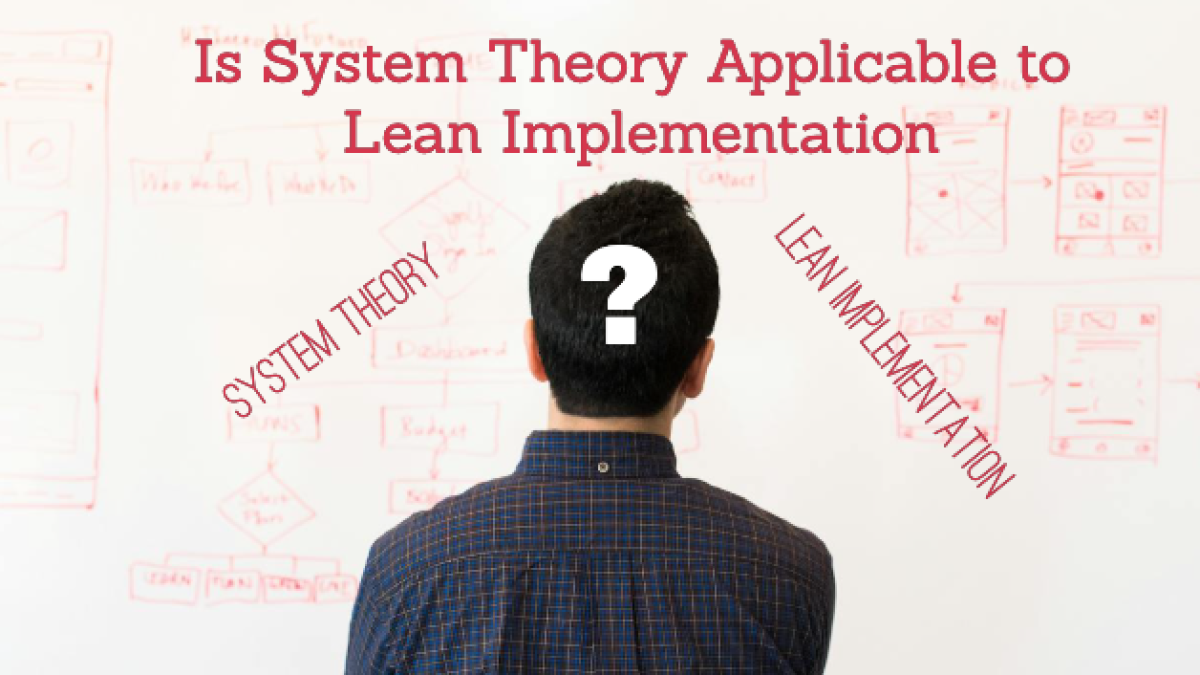Is System Theory Applicable to Lean Implementation?

Is System Theory Applicable to Lean Implementation?
System theory provides a comprehensive framework for understanding complex interrelated components within an organization, making it highly applicable to improving a management team's approach to implementing Lean thinking and practices. Here's how system theory can be connected to Lean implementation:
1. Understanding the Whole System
- System theory emphasizes viewing the organization as an interconnected system where each part (department, team, or process) influences the others. In relation to Lean, the management team can use this holistic perspective to ensure that Lean practices are not applied in isolated silos but are integrated across all levels of the organization.
- Lean is focused on creating value by reducing waste, and this can only be achieved effectively when the management team understands how different parts of the system interact. For instance, a change in one department (such as a change in production flow) may affect sales, customer service, or inventory management, so those interdependencies need to be considered.
2. Feedback Loops and Continuous Improvement
- Feedback loops are a key concept in systems theory, where outputs of processes are fed back into the system to improve future performance. In Lean, this concept aligns with the “Plan-Do-Check-Act (PDCA)” cycle, a core methodology used for continuous improvement.
- Management teams can establish mechanisms for gathering real-time feedback from employees, customers, and operational data, and use this feedback to refine Lean practices, remove inefficiencies, and sustain improvements over time. This creates a dynamic, learning organization that adapts and improves continuously.
3. Balancing Efficiency and Flexibility
- System theory suggests that organizations need to balance efficiency with adaptability to function well in a constantly changing environment. Lean thinking strives to streamline processes and eliminate waste, but it also needs to allow for flexibility in responding to market shifts, customer needs, and innovation.
- Lean can often lead to streamlined operations that remove unnecessary activities, but if applied rigidly, it might reduce flexibility. Management must ensure that the Lean implementation process does not inhibit innovation or the ability to adapt quickly to changing circumstances, which is a key tenet of systems thinking.
4. Subsystems and the Role of Teams
- Within system theory, each department or function within the organization can be viewed as a subsystem that contributes to the overall system’s performance. Lean is most effective when each subsystem within the organization aligns with the overall goal of reducing waste and maximizing value.
- The management team needs to ensure that the Lean principles are embedded in every team or department's processes. For example, Lean practices in the production line need to be integrated with Lean practices in customer service or inventory management. Coordination across these subsystems ensures that Lean improvements are not undermined by inefficiencies in other parts of the business.
5. Establishing Systems Thinking in Leadership
- Management teams play a critical role in setting the tone for how Lean thinking is implemented across the organization. A systems thinking mindset in leadership means not just focusing on the specific tools of Lean (such as 5S, Kaizen, or Value Stream Mapping) but also on the organization’s culture, communication, and decision-making processes.
- Leaders need to foster an environment where everyone understands their role within the larger system and is empowered to identify waste and suggest improvements. This systems-oriented approach can lead to higher engagement and a more collaborative atmosphere that accelerates Lean adoption and results.
6. Systemic Thinking in Problem-Solving
- A systems approach to problem-solving encourages the management team to ask questions like: What is causing the inefficiency or waste in the first place? How do different components of the organization contribute to this issue? This aligns with Lean’s root cause analysis approach, such as the "5 Whys" or "Fishbone diagram".
- By considering problems from a system's perspective, the management team can better identify the underlying causes of inefficiency or quality issues, rather than just addressing symptoms. This systemic view ensures that Lean improvements are sustainable and not just temporary fixes.
7. Aligning Organizational Objectives
- System theory highlights the importance of aligning the objectives of various subsystems with the organization’s overall goal. In the context of Lean, the organization’s strategic goals (such as customer satisfaction, profitability, and operational efficiency) should be the guiding force for all Lean initiatives.
- The management team must ensure that every department or team’s Lean efforts align with these broader goals, which helps in creating a unified approach across the entire organization, reinforcing Lean principles at all levels.
Conclusion
In summary, system theory is highly relevant for improving a management team's approach to Lean thinking. It encourages the team to consider the organization as an interconnected whole, understand the importance of feedback loops, balance efficiency with adaptability, and engage with every part of the business in a holistic manner. By adopting a systems approach, management can ensure that Lean principles are implemented effectively, with lasting improvements that benefit the entire organization.
Categories: : Training
 Christopher Turner
Christopher Turner 